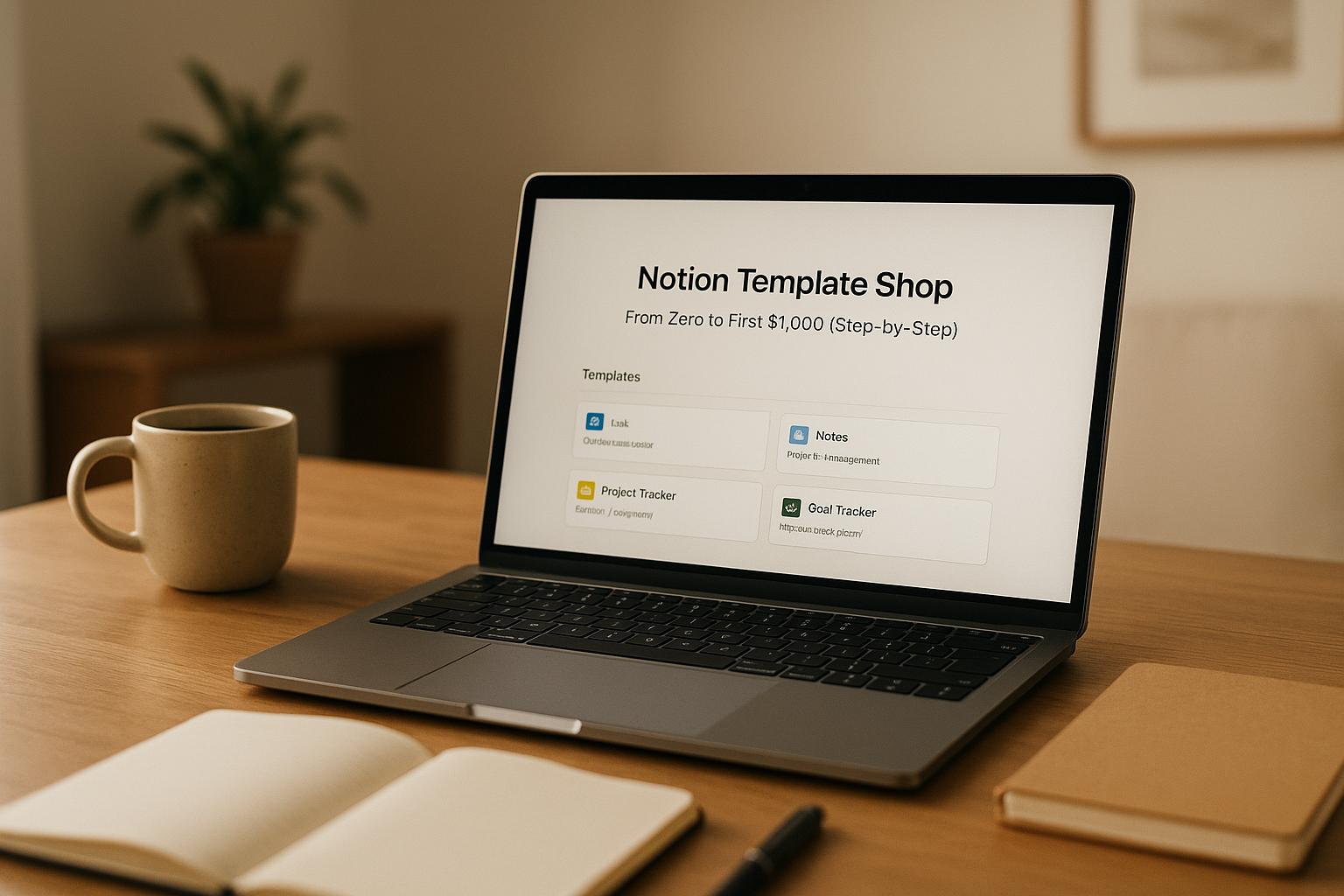
What makes an 'ugly' business model so successful? It’s all about solving real problems, focusing on results, and ignoring flashy appearances. Companies like Craigslist, budget airlines, and ServiceNow prove that practicality beats aesthetics when it comes to creating value. These businesses prioritize customer needs, use creative pricing, and deliver measurable outcomes.
Key Takeaways:
- Problem-solving first: Address overlooked customer challenges.
- Focus on results: Deliver value over appearance.
- Creative pricing models: Think shared ownership or outcome-based pricing.
- Examples of success:
- Craigslist: Simple design, effective usability.
- Budget airlines: Affordable travel through cost-cutting strategies.
- ServiceNow: Simplified enterprise software for better workflows.
- Pooper Trooper: Turning pet waste removal into steady profits.
Why it works: Customers care more about solutions than style. By solving real problems, these businesses build trust, grow through word-of-mouth, and achieve lasting success.
Key Elements of Successful 'Ugly' Models
Solving Overlooked Customer Problems
Businesses with so-called 'ugly' models succeed by tackling problems that others ignore, prioritizing practicality over flashy design. Take Craigslist, for example. Its no-frills interface might not win design awards, but it gets the job done. With simple categorization and a focus on usability, the platform helps users find what they need quickly. This practical approach has kept millions of users coming back, proving that solving problems effectively often beats looking polished.
Prioritizing Results Over Looks
Here’s how some companies have thrived by focusing on outcomes:
| Company | Key Result | Time Period |
|---|---|---|
| Six Pack Abs | 54% conversion rate | Recent redesign |
| Zesty | 400% ROI for customers | 2019–2023 |
| Medalia Art | 40% conversion rate | 2014 |
Focusing on results has driven success for many businesses. Medalia Art, for instance, boosted its conversion rate to 40% and cut bounce rates by 20% with a simple holiday sale message. Similarly, Seth Godin’s blog thrives on delivering meaningful content, even with its minimalist design. These examples show that prioritizing measurable outcomes can lead to impressive growth.
Driving Customer Growth Through Results
When companies solve real problems effectively, customer growth often follows. Zesty, a cloud optimization company, is a great example. By 2023, they had 400 customers and raised $116 million, all while offering a straightforward promise: save money or pay nothing.
"I want to build a company without ego where people can ask questions and learn. I want to work in a company where people can solve problems together."
– Alexey Baikov, Co-founder of Zesty
Focusing on customer success rather than appearances builds trust and fosters growth. This means delivering measurable results, keeping user experiences simple, and addressing customer needs directly. Over time, these factors drive word-of-mouth recommendations and lasting success.
3 Success Stories of 'Ugly' Business Models
ServiceNow: Prioritizing Function Over Design

ServiceNow shows how focusing on usability can transform enterprise software. Founder Fred Luddy believed that enterprise tools should be as intuitive as consumer platforms like Yahoo or Google.
"Man, you know, enterprise software could be that way, completely declarative, no programming, no training, no documentation."
By creating a platform that required no programming or extensive training, ServiceNow made complex workflows accessible to more users. Instead of relying on scattered email communications, the platform streamlined processes, helping companies identify and fix inefficiencies. This approach highlights how simplifying functionality can lead to success in even the most complex industries.
Budget Airlines: Stripping Down to Essentials
Budget airlines reshaped air travel by cutting out traditional perks and focusing on affordability. Their model succeeded by implementing strategies like:
| Strategy | Impact |
|---|---|
| Point-to-point flights | Avoided expensive hub stops |
| Single aircraft fleet | Simplified maintenance and training |
| Ticketless travel | Reduced costs tied to paper tickets |
| Ancillary services | Generated over half of revenue through extra fees |
Southwest Airlines, for example, saved $3.5 billion through aggressive fuel hedging between 1991 and 2008. This helped lower domestic round-trip fares from $647.94 in 1990 to $420.70 in 2019 (adjusted for inflation).
"If you get your passengers to their destinations when they want to get there, on time, at the lowest possible fares, and make darn sure they have a good time doing it, people will fly your airline."
– Herb Kelleher
Subscription Garbage Collection: Turning Pet Waste Into Profit
Moving beyond tech and travel, a surprising success story comes from pet care. Pooper Trooper, operating in Puget Sound, WA since 1989, built a thriving business around pet waste removal.
Their model is simple yet effective:
- Average weekly charge: $20 per house
- Service time: 15–30 minutes per property
- Daily earnings potential: Around $200 by servicing 10 houses
- Expansion options: Contracts with HOAs, apartment complexes, and pet-friendly rentals
With low startup costs and steady recurring income, this business proves that tackling overlooked problems can lead to impressive results.
sbb-itb-08dd11e
Testing and Growing Your 'Ugly' Business Idea
Testing Market Need with IdeaFloat

When tackling overlooked challenges, it's crucial to test your idea early to see if it holds water. Use tools like IdeaFloat's Business Summary Generator and Market Size Assessment to gather data and validate your concept.
"Once I'm through that, the best way to test a business idea is to build some prototype and show it to people to get some honest and authentic feedback." - Greg Isenberg
Here’s how you can collect feedback effectively:
- Build a Minimum Viable Product (MVP): Focus on solving the main problem and use IdeaFloat's Validation Score to identify both strengths and weaknesses.
- Survey Potential Customers: Wayde Gilchrist suggests surveying at least 50 people to confirm the problem exists and gauge interest.
Using Customer Input to Improve
Feedback is gold - turn it into actionable steps to refine your idea. IdeaFloat's Feedback Generator can help you analyze responses and guide improvements based on real insights.
| Feedback Source | Purpose | Action Items |
|---|---|---|
| Surveys | Confirm problem-solution fit | Adjust your core offering |
| Social Tracking | Monitor market sentiment | Fine-tune your messaging |
| Competitor Analysis | Spot gaps in the market | Strengthen differentiation |
| User Testing | Test usability | Improve user experience |
"Identify people in that target [audience] you know to be skeptical and critical." - Chip Bell
Once you've gathered and acted on feedback, it's time to think about scaling your business while staying true to your original vision.
Growing Without Losing Focus
After validating your idea, the next step is growth - without losing sight of your core value. A great example of this balance is AreYouInterested?, which used "The Beer Test" during hiring to maintain its unique culture back in 2011.
Here are some strategies to grow effectively:
-
Systemize Your Operations:
Create clear processes, track key metrics, and build infrastructure that supports growth. -
Encourage Innovation:
Experiment with new ideas, keep your operations adaptable, and involve your team in brainstorming.
"If you want to retain and motivate talented employees, make sure they are working on the biggest challenges and opportunities instead of the biggest problems." - Cliff Lerner
Ugly Businesses = Beautiful Profits / Buying a Business ...
Conclusion: Success Through Problem-Solving
The key takeaway from examining unconventional success stories is clear: businesses thrive when they solve real problems, not when they focus on appearances. Examples like ServiceNow and budget airlines show that prioritizing solutions over traditional methods leads to long-term success.
"People should always start businesses to solve a problem that others have. And the most successful businesses are the ones where the founder experienced the problem themselves firsthand. Too many entrepreneurs start a company just for the sake of starting a company without starting from a problem. Instead, they end up with a 'solution in search of a problem,' instead of the other way around." - Federico Grimaccia of Runtofly
Focusing on real market needs allows entrepreneurs to tap into genuine demand and create loyal communities. Danny Veiga of Chadix emphasizes:
"I believe solving real problems people encounter is the best way to build an impactful business. If your solution alleviates frustrations, saves money, or saves time for customers, you inherently create tremendous value."
Priyanka Swamy of Perfect Locks shares a similar perspective:
"My business was started out of a passion to solve a common issue, creating solutions that boost self-confidence and empower people to express themselves. Running a business to solve everyday issues is important because it enables entrepreneurs to make a positive difference in the world while meeting a need in the marketplace."
Related Blog Posts
Get the newest tips and tricks of starting your business!


